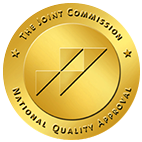
Self-Harm: How To Help A Loved One




Understanding Self Harm
Self-harm behaviors are more commonly seen in adolescents and college-aged individuals, but these behaviors can carry into adulthood. At its core, self-harm is a symptom of deep emotional distress and dysregulation and it is important to treat the underlying issues that are creating the impulse to self-harm.
Self-harm and self-injury often trigger feelings of shame and guilt which can perpetuate the cycle of self-harm and self-inflicted pain. In order to break the destructive cycle, it is essential to understand some of the nuisances of self-harming and how to seek healthy coping skills for long-term recovery.
What are Self-Harm and Self-Injury?
Self-harm or Self-injury refers to deliberate behavior that an individual engages in with the intention of causing harm to themselves. In general, these behaviors are non-lethal and are not meant to intentionally end the life of the person engaging in self-harm. There are several different behaviors that fall under the self-harm and self-injury umbrella – some may seem obvious while others are harder to identify.
Acts of self-harm may be placed in two categories – external harm or injuries and internal harm or injuries. While self-harm and self-injury typically refer to behavior that injures one’s body externally, it is important to understand that self-harm can also include forms of internal injury.
Internal forms of self-harm may cause injury primarily to the individual’s emotional or mental state. When self-harm occurs externally the severity of the self-inflicted injury can range from superficial wounds to more serious injuries that result in lasting marks or disfigurement. (1)
Forms of external self-harm include:
- Cutting
- Burning
- Scratching
- Hitting
- Pinching
- Bruising
- Substance abuse
- Engaging in unsafe sex
- Ignoring regular self-care and hygiene
- Eating disorders and disordered eating
Who is at Risk?
People of all ages, genders, and backgrounds have the potential to engage in self-harm behavior. Generally, self-harm occurs most often in adolescents and young adults. Data shows that for teens and young adults self-harm occurs in 4-6% of adolescent boys and 17-30% in girls. (3)
Adults are also at risk for self-harm and self-injury behaviors, especially if they engaged in self-harm during their adolescence. The good news is that there is no indication that any specific demographic is less receptive to receiving treatment for self-harm behavior – people of all ages have the ability to seek treatment and recover from self-harm and self-injury.
Self-harm is not classified as a mental illness but mental and behavioral disorders may contribute to engaging in this destructive behavior. Examples of illnesses most associated with self-harm include borderline personality disorder, depression, eating disorders, anxiety, and post-traumatic stress disorder.
Experiences with various forms of trauma or abuse can increase the risk of turning to self-harm or self-injury rather than developing healthy coping skills. Low self-esteem or self-image can also contribute to an increased risk of self-harm.
Signs of Self-Harm Behavior
Identifying self-harm can be difficult because these behaviors are often being engaged in private and are kept a secret. It may be difficult to know for certain that a loved one is engaging in self-harm, usually because the individual is attempting to keep the behavior secret or is self-harming in private.
Frequent fresh cuts, burns, or bruises may be signs of active self-harm. Additionally, scars and bald patches may indicate a longer pattern of harm. Certain body parts with scars or injuries can be a sign of self-injury.
Most frequent sites of self-harm and self-injury include: (4)
- Hands
- Wrists
- Stomach
- Thighs
An attachment to certain styles or pieces of clothing can indicate self-harming behavior is occurring. Consistently wearing long sleeves or pants even when the weather is warm, or constantly wearing wrist bands or other coverings may be a sign of self-harming. (5)
Self-harming behaviors may also be accompanied by displaying obvious signs of emotional distress such as heightened anxiety or depression symptoms. In addition to the emotional indicators, relationship problems or avoidance of interpersonal relationships altogether can be signs of self-injury. Poor functioning in daily life can become apparent at school, work, or home. (6)
Self-Harm & Substance Abuse
Self-harm and substance abuse oftentimes can cooccur while struggling with emotional distress and depression. While under the influence of a controlled substance, self-harm or self-injury may be more likely. Additionally, studies have shown that especially for adolescents and young adults self-harm can be a predictor for substance abuse in the future.
Substance abuse can be categorized as a form of self-harm on its own. However abusing alcohol, nicotine, marijuana or illicit drugs can serve as a catalyst to engage in self-injury behaviors such as cutting or participating in other risky behaviors. One study in particular notes that drug and alcohol abuse is a major predisposing factor to deliberate self-harm. (7)
Self-harm and self-injury also can serve as a catalyst to abuse alcohol or illicit drugs, especially for teenagers and young adults. A history of self-harm during adolescence can produce a higher chance of substance abuse during adulthood.
While there are several factors such as impulsive personality traits or dysfunctional home life, the underlying truth is that self-harm and substance abuse typically occur in response to negative affect. Emotional dysregulation such as major depressive disorder or anxiety disorder, when left untreated can lead to self-harm and substance abuse without healthy coping management skills and emotional regulation techniques.
Self-Harm & Suicide
The relationship between self-harm behaviors and suicide is not as obvious as it may seem. The presence of self-harm behaviors does not automatically mean there are suicidal thoughts or plans. Generally, individuals who are actively self-harming or self-injuring are not suicidal.
Self-harm and self-injury are clear indications of emotional pain and a lack of appropriate coping skills. The feelings and emotional distress experienced when self-harming and with suicidal ideation are similar – yet self-harm behavior is rarely intended as a suicide attempt.
The line between self-harm and suicide becomes less clear when continuous engagement in destructive self-harm behaviors occurs over an extended period of time. A long history of self-harming behaviors can lead to suicide attempts and life-threatening consequences. The potential risk for suicide increases with continued self-harm, therefore it is important to seek help for these behaviors immediately.
What Does it Mean if a Loved One is Self-Harming?
Once you have identified that your loved one might be self-harming it is essential to proceed with sensitivity and caution. It is normal to feel your own feelings of guilt, worry, or anger about your loved one’s destructive behavior. If your loved one is self-harming their behavior is not your fault – or a reflection of your relationship.
Engaging in self-harm is an indication that healthy effective coping skills are necessary. The first step to receiving treatment and recovery from self-harm is to talk about the concerns you have with your loved one.
Talking to your loved one about your concerns may feel intimidating or uncomfortable but is important to approach the conversation with care and compassion. Do not be afraid to talk to your loved one about your concerns. Studies have shown that individuals who act out in self-harm and self-injury wish that someone would raise the subject with them despite it being uncomfortable. (8)
Inviting your loved ones to speak openly and honestly about their feelings and reasons for self-harming can be helpful. It is also important to reassure your loved ones that you will not judge them – showing them openness and empathy can help them speak openly with you.
Simply put, listening and coming from a place of understanding can provide your loved one with the comfort and reassurance that you are a safe person to talk to regarding their self-harm behavior. If you speak to your loved one and they refuse to discuss self-harming let them know that they can always come to you for help and support when they are ready.
If you feel as though the situation is severe, it is recommended that you seek the assistance of a medical professional – especially if your loved one is unwilling to talk to you directly or accept support. While an initial intervention from a loved one is preferable, medical or behavioral health clinicians can help guide you to approach the conversation of self-harm with your loved one.
Treatment for Self-Harm & Self-Injury
Seeking the help of medical professionals and clinicians is an important step in the process of recovery from self-harm and self-injury. Medical professionals can gather background information to assess the behavioral health conditions, the more detailed information that is given to the medical provider the more comprehensive a treatment plan can be.

Medication
Based on the professional assessment, medication may be prescribed to assist with the urge to act out in self-harm. Medications for depression and anxiety have the ability to treat the emotional distress that triggers the destructive behavior that is being engaged in.

Therapy
In addition to or instead of medication, different forms of therapy may be used to treat self-harm behaviors and underlying causes. Therapy can help introduce new coping strategies to deal with the urges and causes of destructive behaviors. Some of the most popular therapy for treating self-harm and self-injury include dialectical behavior therapy (DBT), cognitive-behavioral therapy (CBT), and psychodynamic therapy. (9)
- Dialectical behavior therapy (DBT) focuses on introducing individuals to positive coping skills and methods – replacing negative coping behaviors from self-harm
- Cognitive-behavioral therapy (CBT) is focused on identifying negative thought patterns and increasing the individual’s healthy coping skills around negative thoughts
- Psychodynamic therapy explores an individual’s past experiences and emotions

Inpatient Treatment
For severe or ongoing self-harm behaviors or symptoms, a medical professional may recommend a stay in a controlled and safe environment such as an inpatient treatment facility for mental and behavioral health. A medical professional will be able to identify and recommend the most appropriate level of care based on severity and diagnosis.
Find Help for Self-Harm & Self-Injury
Self-harm and self-injury are not behavioral health disorders but can be a symptom of underlying behavioral health problems. Treatments for self-harm are effective when the underlying issues are addressed appropriately. Treatment and therapy can help with moving forward and living a normal, healthy lifestyle.
If you or a loved one are struggling with self-harm and self-injury behaviors, contact New Method Wellness today. Our team can answer any questions you may have and give you a better understanding of our program. Finding the appropriate treatment for you or your loved one’s underlying issues is key to lasting recovery from self-harm and self-injury.
References
- Self-injury & Recovery Resources (SIRR). (2022). Retrieved from http://www.selfinjury.bctr.cornell.edu/about-self-injury.html
- Sansone, R., & Sansone, L. (2010). Measuring self-harm behavior with the self-harm inventory, 7(4),. Retrieved from https://www.ncbi.nlm.nih.gov/pmc/articles/PMC2877617/
- Self-Harm. (2022). Retrieved from https://www.psychologytoday.com/us/basics/self-harm
- American Psychological Association (2015, July/August). Who self-injures?. Retrieved from https://www.apa.org/monitor/2015/07-08/who-self-injures
- Sweet, M. & Whitlock ,J.L. (2009). Information for parents: What you need to know about self-injury. The Fact Sheet Series, Cornell Research Program on Self-Injury and Recovery. Cornell University. Ithaca, NY. Retrieved from http://www.selfinjury.bctr.cornell.edu/perch/resources/info-for-parents-english.pdf
- Behavioral Health America. (2022). Self-injury (cutting, self-harm or self-mutilation). Retrieved from https://www.mhanational.org/conditions/self-injury-cutting-self-harm-or-self-mutilatio
- Byrne, D., Moller, C., & Tait, R. (Accessed: 2022). Deliberate self-harm, substance use and negative affect in non-clinical samples: A systematic review. Retrieved from https://espace.curtin.edu.au/bitstream/handle/20.500.11937/20785/193700_193700.pdf?sequence=2&isAllowed=y
- Goodman, J., & Whitlock, J. (2009). How can I help a friend who self-injures? The Fact Sheet Series, Cornell Research Program on Self-Injury and Recovery. Cornell University. Ithaca, NY. Retrieved from http://www.selfinjury.bctr.cornell.edu/perch/resources/how-can-i-help-a-friend-english.pdf
- National Alliance on Mental Illness (2022). Self-harm. Retrieved from https://www.nami.org/About-Mental-Illness/Common-with-Mental-Illness/Self-harm
- Kerr, P. L., Muehlenkamp, J. J., & Turner, J. M. (2010, March 1). Nonsuicidal self-injury: A review of current research for family medicine and Primary Care Physicians. American Board of Family Medicine. Retrieved March 10, 2022, from https://www.jabfm.org/content/23/2/240.full
TAKE THE FIRST STEP
From all of us at New Method Wellness co-occurring treatment center, we wish you peace and serenity in knowing that you or your loved one will get the necessary help.
ACCREDITED BY:

